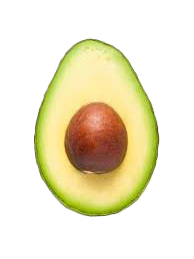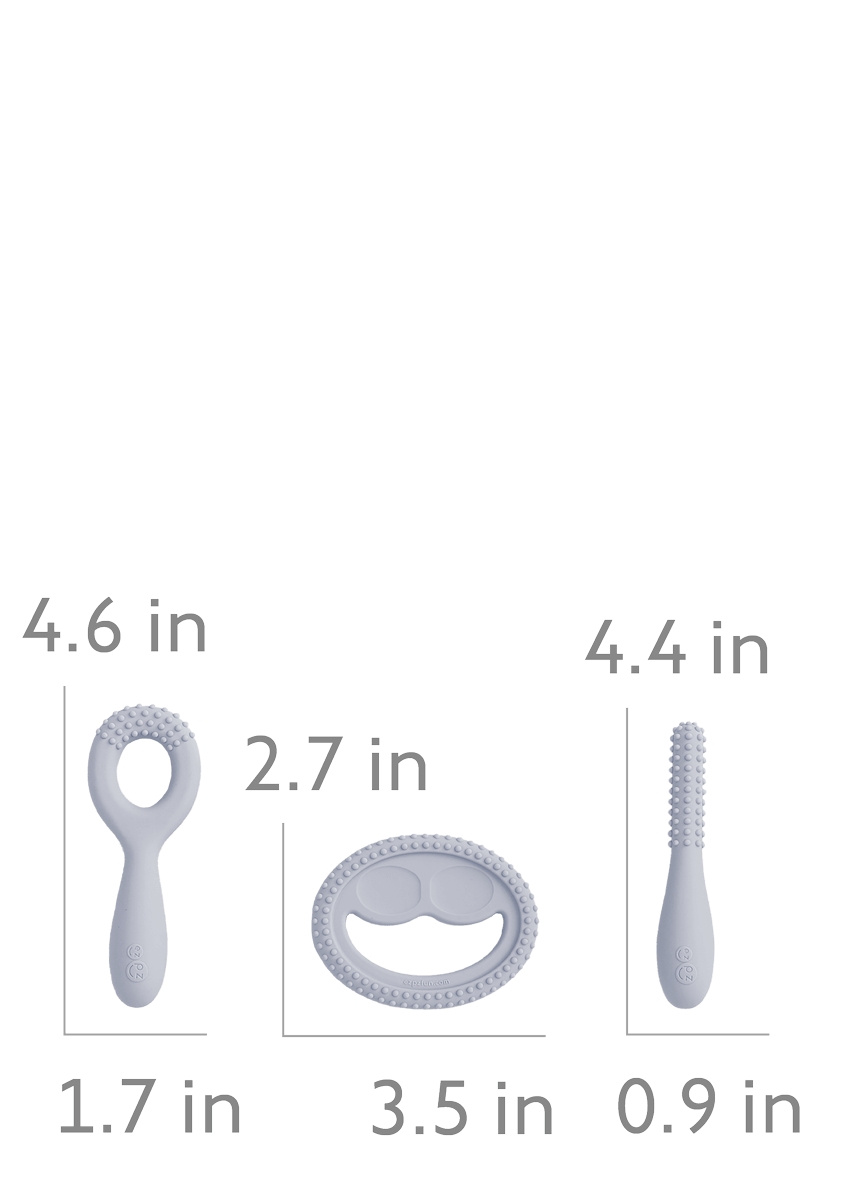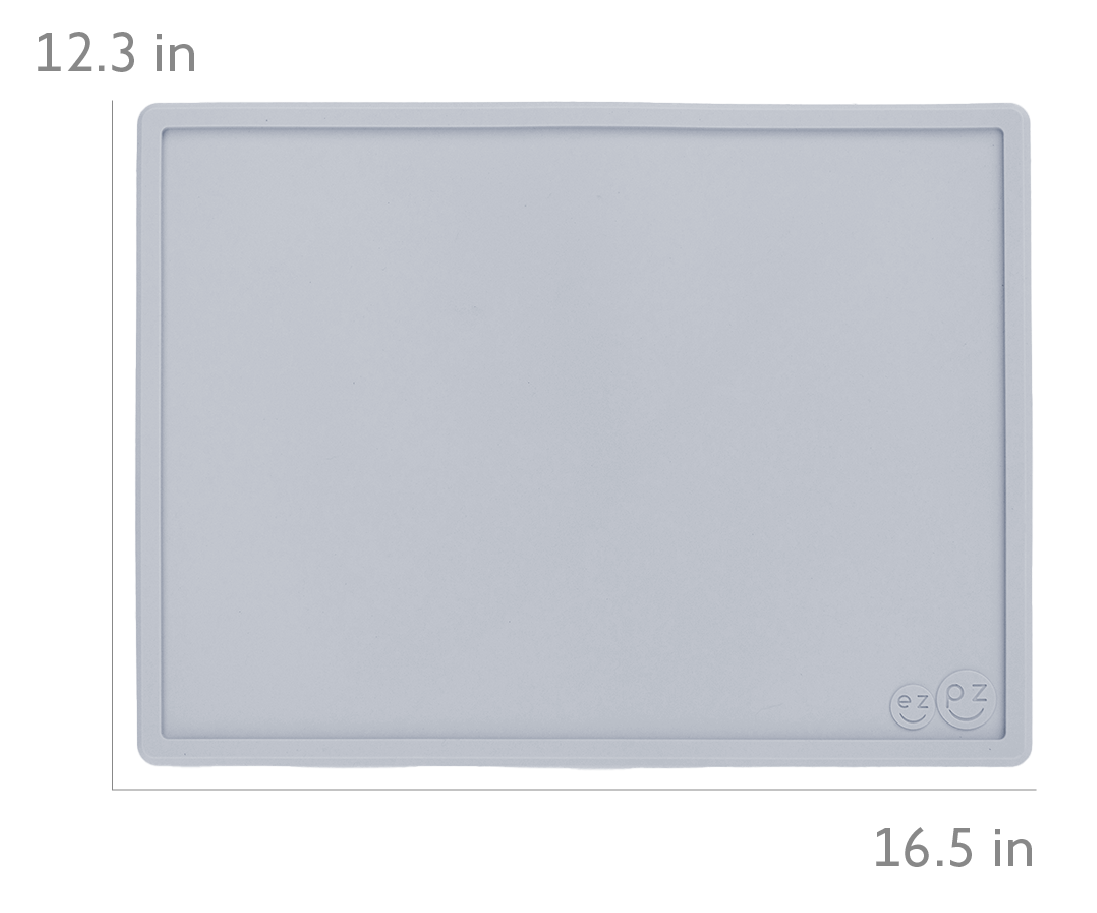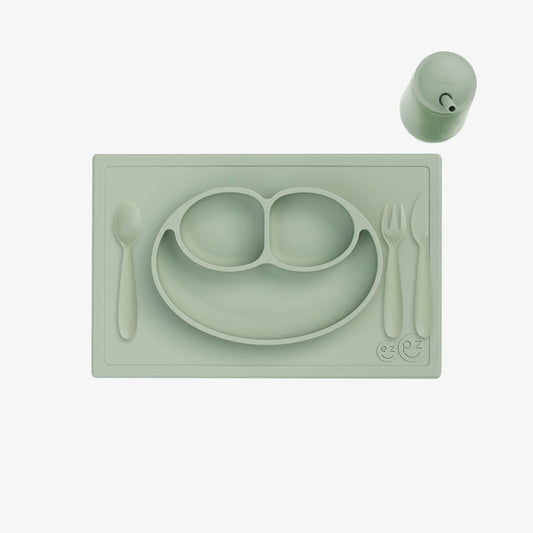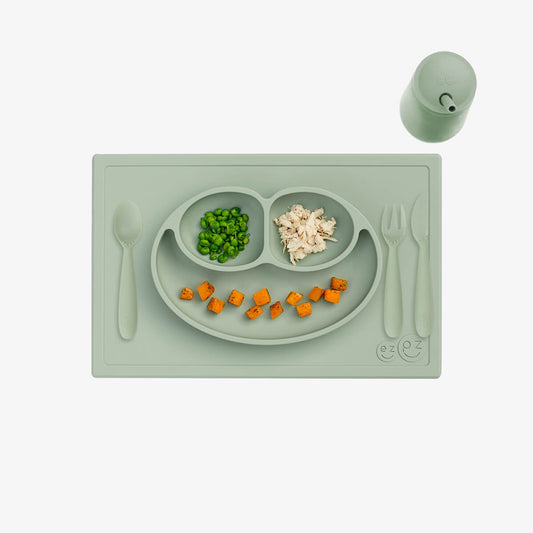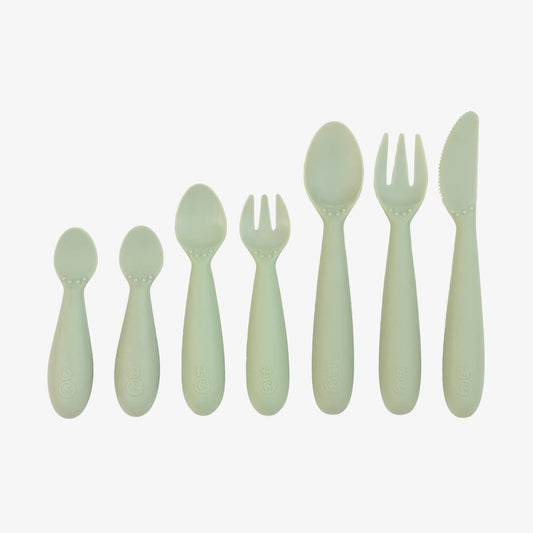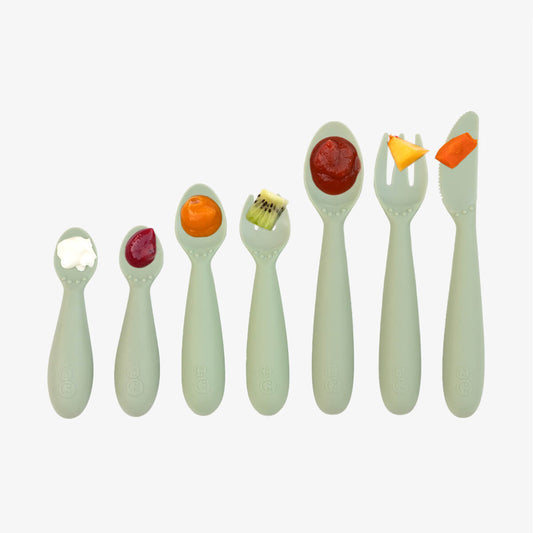How to Avoid BLW Pitfalls (Part 2)
By Dawn Winkelmann, M.S, CCC-SLP
Speech Language Pathologist & Feeding Specialist for ezpz

More parents are choosing to feed their baby using the Baby Led Weaning (BLW) feeding method. This method skips puree food textures and starts baby on the same solid foods as the rest of the family. Introducing baby to complementary foods should be a joyous occasion, yet it can be overwhelming with conflicting information from the media, family and friends. Here is some practical advice (from a speech language pathologist and feeding expert) on common BLW pitfalls and how to avoid them! (This is Part 2 in the BLW blog series. Make sure to check out Part 1 here).
Offering Foods That are Too Hard: One pitfall I see is giving a food that is too hard, resulting in a choking episode. When you are thinking about starting BLW you want a texture that can be mashed easily in your baby’s mouth, which helps them learn how to chew. To avoid the mistake of offering hard foods, use my ‘Squish Test’ to see if a food has a safe texture for your baby.
- Take a piece of the food you want to give baby and gently squish it against the roof of your mouth with your tongue.
- Alternatively, lightly squish the food between two of your fingers.
If the food passes the ‘Squish Test’ offer it to your baby (with supervision of course!). Gradually your child will gain more oral control, chew more intentionally and be ready to safely manage harder textures. Yes!
Being Unprepared for Gagging or Choking:The gagging reflex is meant to teach your baby how to chew and swallow safely. But one pitfall I often observe is a parent or therapist over-responding to a child gagging. I have seen parents soar over the dining table to ‘save’ their baby from avocado – only to scare the baby (causing them to quickly inhale air AND the food) and choke. I have seen this so many times in person (as well as on videos parents have sent me), and thankfully all the adults performed CPR quickly and effectively. To avoid this pitfall, try the following:
- Watch YouTube videos of children gagging. I know this sounds weird, but trust me, once you know what to expect it is not as scary when you see YOUR child experience it. Gagging looks a little different with each kid, but generally it’s a lot of surprised expressions, drooling, retching, watery eyes, running nose and a lot of fun gooey mess.
- Take a CPR course to make you feel more confident. And have ALL the feeders in your child’s life take one too!
- Supervise all meals from start to finish. Being attentive and present are the best ways to help teach your child how to eat and avoid choking.
- Do not offer food to baby in a car seat or while lying down, since this position can cause baby to gag and possibly choke.
- Look composed, smile and take a few breaths while your child is gagging. They will look at you for your reaction (since they are learning a new skill and are unsure) and you want your expression to be one of calmness, pride and confidence. You got this!
Waiting Too Long to Get Help with Habitual Gagging: Another common pitfall I have encountered is parents waiting too long to seek medical help with habitual gagging. With some children, constant and consistent gagging when eating causes it to become a habit over time. Habitual gagging (specifically when they see, smell, touch or eat) may be a sign of something more serious such as:
- A motor disorder (difficulties organizing the muscles in their mouth to safely eat)
- Reflux (gastroesophageal reflux disease (GERD) is the painful backflow of stomach contents into the esophagus)
- A swallowing disorder (dysphagia is a swallowing impairment that makes drinking and eating difficult which, in some cases, can be life threatening)
- Food allergies (reactions to foods that may be irritating, uncomfortable and can be fatal)
- A sensory disorder (difficulties with the sensations of food in their mouth to safely eat)
All of these common pediatric medical diagnoses can cause food aversion and refusal to eat. This is an indicator that the baby needs further medical care, including a feeding evaluation from a speech language pathologist or occupational therapist that specializes in feeding / swallowing disorders. Parents do not need to be alone on this feeding journey and are encouraged to seek out help before eating becomes a battlefield in their home.
Serving Too Few or Too Many Foods: Another BLW pitfall that can cause picky eating is serving too few or too many foods at mealtime. I encourage parents to:
- Offer 3 foods at a meal (instead of just a bowl of cereal or a bowl of mac & cheese)
- Avoid giving more than 5 foods (too many choices can be overwhelming for a new or hesitant eater)
It is very important for a child to have the opportunity to touch, play, gum, munch, eat and explore three very different types of food at mealtime. That’s why I like to use ezpz products, since there are three sections on the both the Mini Mat and Happy Mat, which is a perfect visual reminder for parents to serve three different foods.
Do you feel prepared to start your baby on solids? Share some of your concerns or favorite BLW advice with us using the hashtags #ezpzfun #blw.
Shop Best Sellers

Happy Feeding!
Dawn Winkelmann (M.S, CCC-SLP) is ezpz’s Pediatric Speech-Language Pathologist and Feeding Specialist. She has 28 years of experience teaching parents and medical professionals how to start babies on solids safely and encourage toddlers to overcome picky eating tendencies. In addition, “Ms. Dawn” is the designer of our award-winning feeding products.


